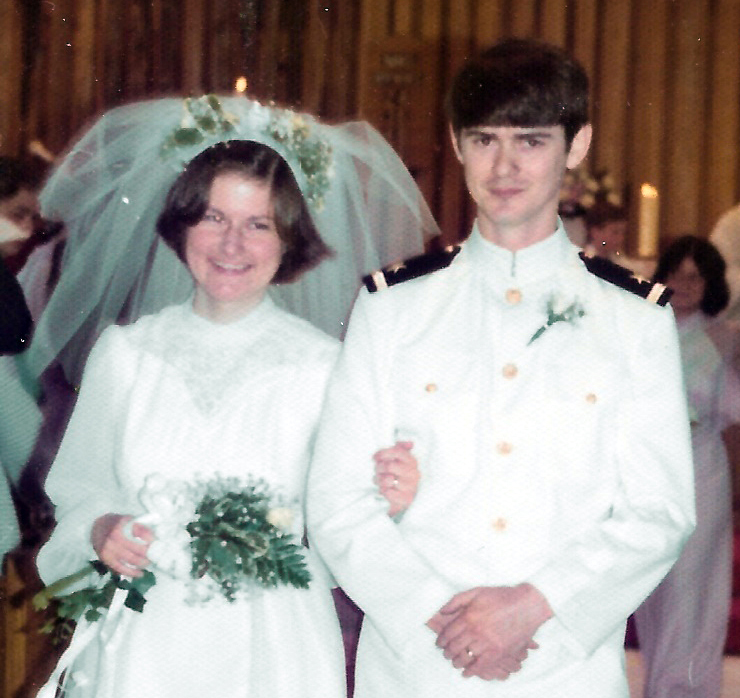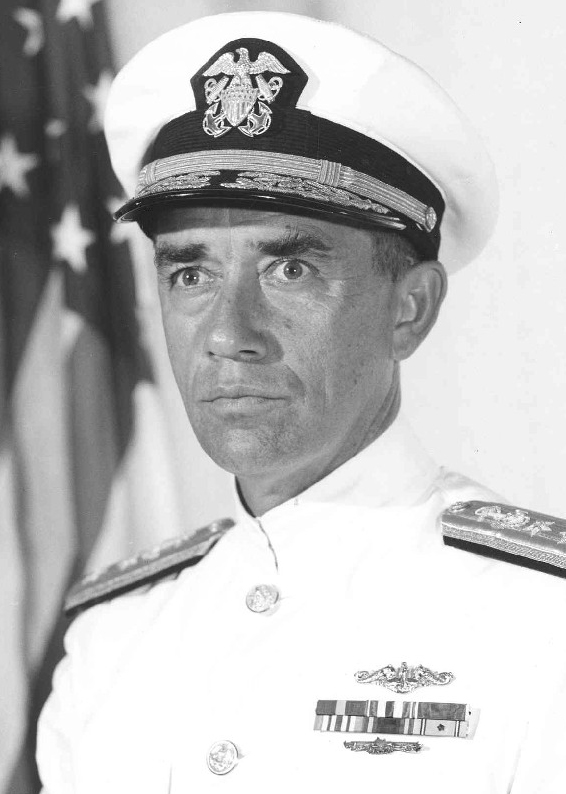The Defense Waste Processing Facility at the Savannah River Plant. (Photo: SRS)
In 1989, the Savannah River Plant was renamed the Savannah River Site. It was originally established in 1950 near Aiken, S.C., to produce nuclear materials for the nation, primarily for defense purposes. The site consisted of a heavy water production plant, three fuel fabrication facilities, five production reactors, two nuclear separation facilities, waste management facilities, tritium processing facilities, and the Savannah River National Laboratory. The main isotopes produced were, by priority, tritium, plutonium-238, and plutonium-239.
Fig. 1. Oppenheimer hosting a gathering in his Bathtub Row house in Los Alamos.
The July 2024 issue of Nuclear News focused on fusion. Editor-in-chief Rick Michal highlighted in his column (p. 4) Los Alamos National Laboratory’s open access special issue of the American Nuclear Society journal Fusion Science and Technology, titled The Early History of Fusion. This article provides a brief summary of the issue—and we encourage readers to explore all of the full papers.a
November 15, 2024, 7:03AMNuclear NewsErhard W. Koehler and Anne Jennings N.S. Savannah, the first commercial nuclear-powered cargo vessel, en route to the World’s Fair in Seattle in 1962. (Photo: U.S. National Archives)
It’s safe to say that readers of Nuclear News are familiar with decommissioning. It’s even safe to assume that experienced decommissioning practitioners are familiar with the National Historic Preservation Act (NHPA) and how it applies to typical projects. What’s different about the N.S. Savannah is that the entire project site is a historic property—and in fact, is a federally owned National Historic Landmark (NHL), a status that confers the highest level of protection under law. Federal owners of NHLs are obligated to minimize harm in both planning and actions. Distilled to its salient point, no federal owner of an NHL should destroy it if there’s a reasonable alternative. That level of preservation is not what we normally associate with nuclear decommissioning. This perfectly summarizes the challenges, and opportunities, that decommissioning Savannah offered. The story of how the Maritime Administration (MARAD) managed these two otherwise contradictory processes showcases how historic preservation and decommissioning can positively intersect, provides a pathway for other historic facilities, and further adds to the already illustrious history of one of our nation’s significant 20th century landmarks.
The once-proposed location of the Fulton HTGR, in relation to modern-day operating nuclear power plants.
Fulton Station was to be a two-unit high-temperature gas-cooled reactor that was originally planned to start commercial operation in 1981 for Unit 1 and in 1983 for Unit 2. Each reactor was to provide 1,160 MWe of power. The nuclear steam supply system (NSSS) and fuel were to be developed by General Atomics (GA), and engineering firm Stone & Webster was charged with handling the construction. The Philadelphia Electric Company (PECO) had big plans for Fulton Station, but ultimately, the plant was never built.
An internal memo explaining the history of ANS.
This year marks the 70th anniversary of the founding of the American Nuclear Society.
Plenty of sources incorrectly list our birthday, but the reality is that October 11, 1954, is the correct date for the establishment of ANS.
September 12, 2024, 12:00PMNuclear NewsErhard W. Koehler and Anne Jennings N.S. Savannah docked in Baltimore in May 2024. (Photo: MARAD)
The American Nuclear Society was formed in 1954 in the wake of President Eisenhower’s seminal Atoms for Peace speech. Around the same time that Congress was debating the Atomic Energy Act and John Landis was helping establish ANS, the National Security Council began deliberating about adding a nuclear-powered merchant ship to the nascent Atoms for Peace program. We like to imagine that the idea germinated after Mamie Eisenhower christened the U.S.S. Nautilus, but the truth seems much drier. Regardless, Ike championed the project and announced it to a surprised crowd in an April 1955 speech in New York City at the Waldorf Astoria Hotel. Landis would become the principal architect of the ship’s nuclear power plant. Although Savannah’s reactor now rests in the low-level radwaste repository in Clive, Utah, the ship’s prospects are as bright as the future of ANS itself.
Aerial view of Hallam nuclear power plant (toward right) and Sheldon Power Station (toward left). (Photo: U.S. AEC/Wiki Commons)
The Hallam nuclear power plant in Nebraska, about 25 miles southwest of Lincoln, was a 75-MWe sodium-cooled, graphite-moderated reactor operated by Consumers Public Power District of Nebraska (CPPD). It was co-located with the Sheldon Power Station, a conventional coal-fired plant. The facility had a shared control room and featured a shared turbo generator that could accept steam from either heat source.
Construction crews work to erect the platform’s structural framework. (Photo: DOE)
Crews are making significant progress on the construction of the K-25 viewing platform at the Oak Ridge Reservation in Tennessee, the Department of Energy’s Office of Environmental Management announced on August 20. When completed next year, the elevated platform will offer a sweeping panoramic view of the massive 44-acre footprint of the K-25 Building, which once produced enriched uranium used in the weaponry that ended World War II.
Peach Bottom Atomic Power Station, Unit 1. (Photo: NRC)
The first high-temperature, gas-cooled reactor ever built in the United States was Unit 1 at the Peach Bottom Atomic Power Station. This demonstration plant, located on the Susquehanna River approximately 80 miles southwest of Philadelphia, Pa., was tasked with validating HTGR design codes. It produced over 1.2 million megawatt-hours of electricity over 1,349 equivalent full-power days (EFPDs), which was distributed by the Philadelphia Electric Company.
The Godiva I device, an unreflected 54-kg sphere of 93.7 percent pure uranium-235, before (left [in the scrammed state]), and after (right) the February 3, 1954, criticality excursion that released 5.6 × 1016 neutrons and warped or broke several support structures of the device. (Photos: DOE)
Fast burst reactors were the first fast-spectrum research reactors to reach criticality by using only prompt neutrons with high-enriched uranium as fuel, creating a pulse for microseconds. Among many achievements, fast burst reactors were the first research reactors to demonstrate the ability of thermal expansion to terminate a pulse and to show how this could aid in reactor safety. In addition, fast burst reactors were pivotal in early fission studies including critical mass determination, criticality safety, the study of prompt and delayed neutrons, and much more.
The Argonne-West laboratory site before it was merged with the Idaho National Engineering and Environmental Laboratory into today’s Idaho National Laboratory. The silver dome in the photo is Experimental Breeder Reactor-II, the silver structure with the flat top and sloping sides is the Zero Power Plutonium Reactor, and the brown boxlike structure behind ZPPR is the Hot Fuel Examination Facility. (Photo: Argonne National Laboratory)
Idaho’s nuclear energy history is deep and rich. The National Reactor Testing Station (NRTS) began its history as an artillery testing range in the 1940s.1 Following World War II, Walter Zinn, Argonne National Laboratory’s founding director and Manhattan Project Chicago Pile-1 project manager, proposed to the Atomic Energy Commission that a remote location be found for building test reactors. In 1949, he and Roger S. Warner, AEC’s director of engineering,2 developed a list of potential sites from which the NRTS was selected. Over the decades, quite a few companies and AEC national laboratories built 52 experimental and test reactors at the NRTS, including 14 by Argonne.3 (For a brief AEC video on the NRTS, see youtube.com/watch?v=C458NsH08TI.)




 I like to say that I ended up at Massachusetts Institute of Technology because of my father. He saw that I seemed intimidated by the prospect of going there, so he dared me, figuring I would take the bait. And I did.
I like to say that I ended up at Massachusetts Institute of Technology because of my father. He saw that I seemed intimidated by the prospect of going there, so he dared me, figuring I would take the bait. And I did.












